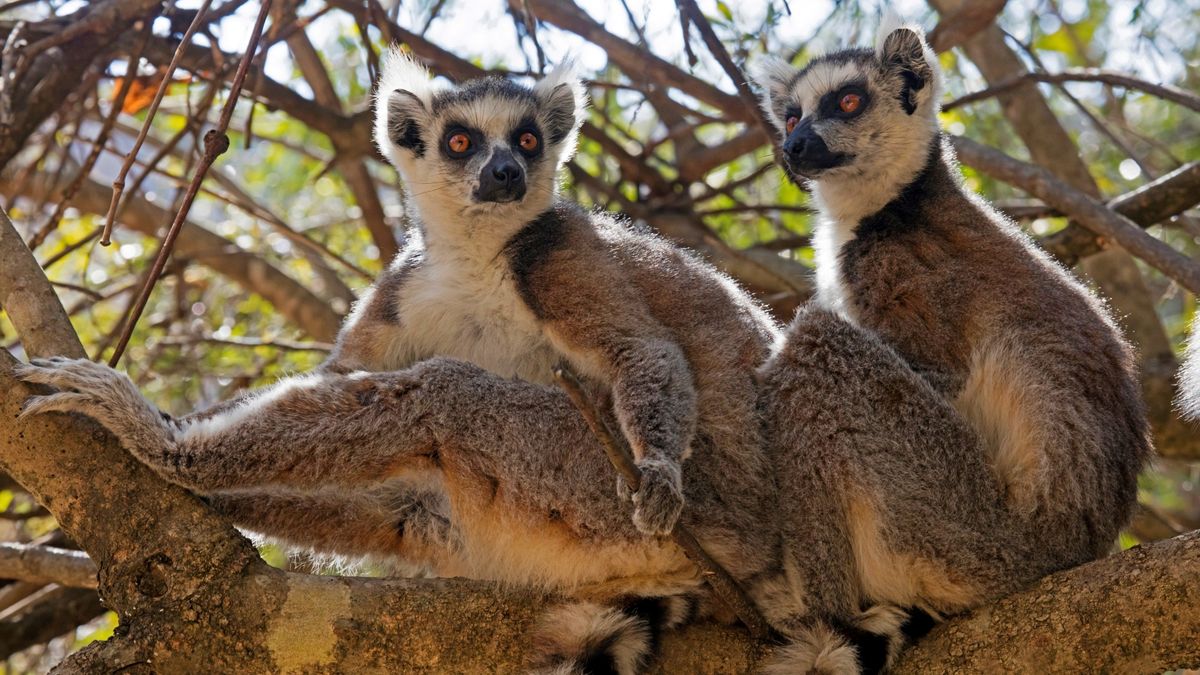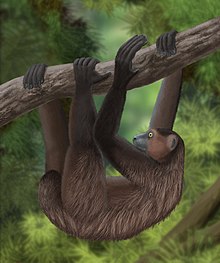Scientists from the University of Otago, Saint Michael’s College and Duke University have examined 447 permanent teeth from two species of monkey lemurs in the extinct genus Archaeolemur.

Monkey lemurs likely ate tough and hard fruits, small vertebrates, and crustaceans. Image credit: Smokeybjb / CC BY-SA 3.0.
Archaeolemur is an extinct genus of lemurs that is often compared to some Old World monkeys, especially baboons.
The genus is composed of two species, Archaeolemur edwardsi and Archaeolemur majori.

Both species lived in Madagascar until relatively recently, likely into the last millennium.
They were larger than any living lemur, with a body mass between 18 and 27 kg.
They are regarded as the most terrestrial and frugivorous of the Malagasy primates, living or extinct.

“These extinct lemurs are so different to those alive today,” said Dr. Ian Towle, a researcher with the Sir John Walsh Research Institute at the University of Otago.
“They also show fascinating similarities to monkeys and apes, including humans.”
“They had novel anatomical features not seen in living lemurs, such as lacking a ‘tooth comb’ in the front of the mouth for grooming.”
Dr. Towle and colleagues aimed to assess the diet of Archaeolemur by analyzing chipping in 447 teeth from both Archaeolemur edwardsi and Archaeolemur majori, comparing chipping frequencies to those of other primates.
/https://tf-cmsv2-smithsonianmag-media.s3.amazonaws.com/filer_public/eb/cf/ebcf3c83-0f1f-4b9c-b956-21602e04bdad/gettyimages-945663262_web.jpg)
Their results were surprising — with these remarkable extinct lemurs with dentitions resembling baboons in shape, but presenting tooth chipping patterns similar to fossil hominins such as Neanderthals.
“Archaeolemur tooth chipping patterns are unlike any living primate, with their front teeth showing substantial fractures, often with numerous tooth chips on a single tooth, yet very little chipping on their back teeth,” Dr. Towle said.
“Similar tooth fracture patterns are observed in fossil hominins, such as Neanderthals.”

“Typically, in Neanderthals these fracture patterns are thought to be related to tool-use behaviors.”
The results fit with previous research on Archaeolemur, in particular evidence that their large and robust front teeth may have been used to process a diet containing hard and tough foods.

“Our study raises the fascinating possibility that stone tools do not necessarily explain the high rate of fractures on Neanderthal teeth,” Dr. Towle said.
“Archaeolemur shows similar tooth chipping patterns, yet there is no evidence to suggest they were capable of, or used, such tools.”
“Studying extinct primates not only provides crucial insight into their diet and behavior, but also elucidates our own evolutionary history.”
Given the overlap in skull and dental shape, and potential similarities in diet and behavior, it is perhaps not surprising that Archaeolemur was thought to be an ape when first discovered in Madagascar over 100 years ago.
“Archaeolemur is a brilliant example of convergent evolution, showing remarkable similarities to monkeys and apes,” Dr. Towle said.
“These species also highlight the extent to which lemurs in Madagascar diversified into a variety of ecological niches.”
Source: sci.news








